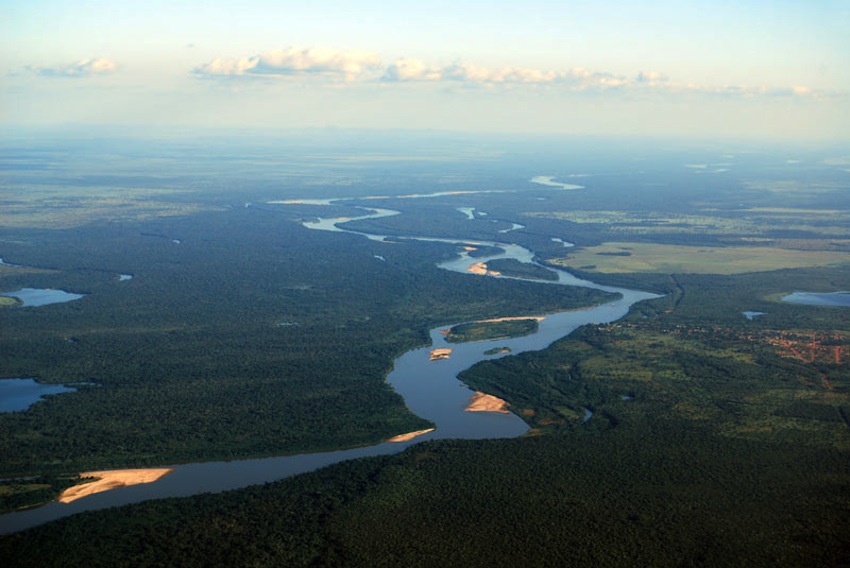Amazon River 'Breathes' Carbon Dioxide from Rain Forest

Bacteria living in the Amazon River can digest woody materials shed by the surrounding rain forest by turning these pieces of tree bark and stems into carbon dioxide as they are washed down the river, according to a new study. The findings bolster the Amazon basin's reputation as being the lungs of the planet, taking in carbon dioxide and releasing oxygen, but show that the carbon dioxide doesn’t necessarily stay trapped in the trees.
Researchers at the University of Washington found that bacteria in the Amazon River can break down almost all of the tree and plant materials in the water, and this process is a major generator of the carbon dioxide breathed by the river.
"Rivers were once thought of as passive pipes," study co-author Jeffrey Richey, a professor of oceanography at the University of Washington in Seattle, said in a statement. "This shows they're more like metabolic hot spots." [The World's Longest Rivers]
To thrive, plants convert sunlight, carbon dioxide and water into food, in a process known as photosynthesis. As they grow, bits of wood and leaves are shed that eventually decompose on the ground, or get washed into the river during periods of rainfall.
Food for the river
Previously, it was believed that much of this plant matter floated down the Amazon River to the ocean, where it ultimately became buried in the seafloor. A decade ago, scientists at the University of Washington discovered that rivers exhale vast amounts of carbon dioxide into the atmosphere, but it was still not known if — or how — river bacteria could break down such tough materials, the researchers said.
"People thought this was one of the components that just got dumped into the ocean," Nick Ward, a doctoral student in oceanography at the University of Washington, and lead author of the new study, said in a statement. "We've found that terrestrial carbon is respired and basically turned into carbon dioxide as it travels down the river."
Get the world’s most fascinating discoveries delivered straight to your inbox.
A compound called lignin forms the main part of a tree's woody tissue, and is the second most common component of terrestrial plants, the researchers said. But rather than flowing into oceans and settling on the seafloor for centuries or millennia, bacteria in the Amazon River can break lignin down within two weeks, the new study found.
In fact, only 5 percent of the Amazon rain forest's plant-based carbon ends up reaching the ocean, the researchers said.
The carbon cycle
While these findings have important implications for global carbon models, they also shed light on the ecology of the Amazon, as well as other river ecosystems.
"The fact that lignin is proving to be this metabolically active is a big surprise," Richey said. "It's a mechanism for the rivers' role in the global carbon cycle — it's the food for the river breath."
From their analysis, the researchers determined that about 40 percent of the Amazon's lignin breaks down in soils, 55 percent is digested by bacteria in the river system, and 5 percent is washed into the ocean, where it breaks down or sinks to the ocean floor.
"People had just assumed, 'Well, it's not energetically feasible for an organism to break lignin apart, so why would they?'" Ward said. "We're thinking that as rain falls over the land it's taking with it these lignin compounds, but it's also taking with it the bacterial community that's really good at eating the lignin."
The study's findings were published online May 19 in the journal Nature Geoscience.
Follow Denise Chow on Twitter @denisechow. Follow LiveScience @livescience, Facebook & Google+. Original article on LiveScience.com.

Denise Chow was the assistant managing editor at Live Science before moving to NBC News as a science reporter, where she focuses on general science and climate change. Before joining the Live Science team in 2013, she spent two years as a staff writer for Space.com, writing about rocket launches and covering NASA's final three space shuttle missions. A Canadian transplant, Denise has a bachelor's degree from the University of Toronto, and a master's degree in journalism from New York University.


